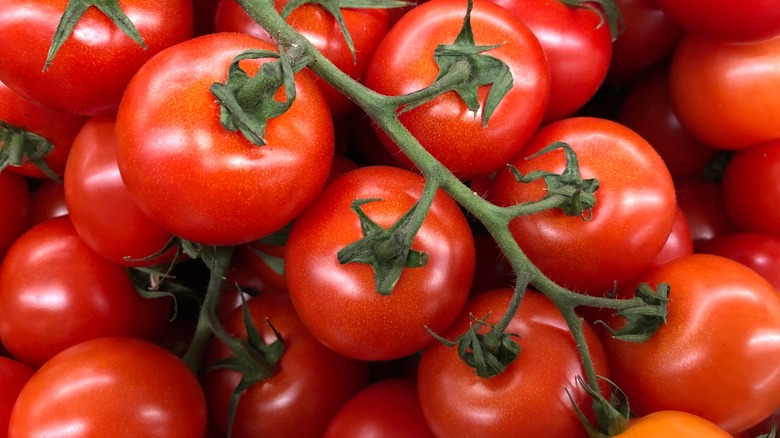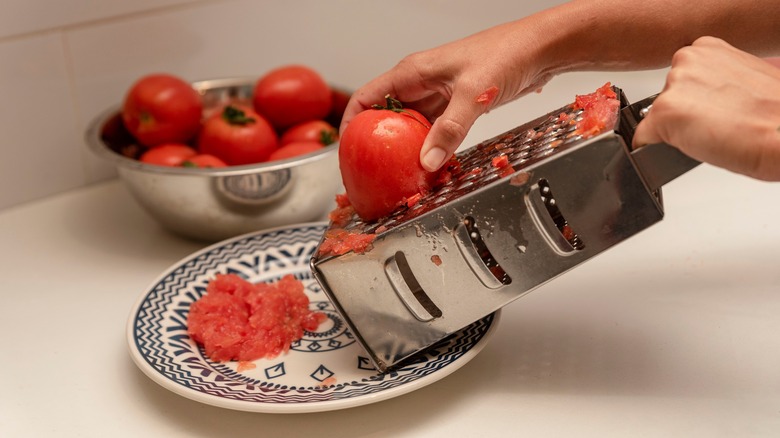The Box Grater Method For Prepping Tomatoes With Less Mess
Tomatoes are a sensitive fruit, squishy and soft, with a sad tendency to get smushed and bruised. Unless you are slicing them for a sandwich, and honestly even then sometimes, tomatoes are prone to falling apart as you cut them. The membrane holding in the seeds bursts out and spills everywhere, and you're left scraping a mangled mass of tomato into a bowl.
Yet despite all this, the go-to method for preparing tomatoes, for just about any use, is slicing and dicing. This is even more confusing when you realize how many tomato recipes call for you to liquify the tomato anyway. So you're chopping up a tomato and making a mess, just to turn around and drop it in a blender, or cook it down to a smooth sauce in the pan. Even when they are left in dices or slices, tomatoes can be a frustrating experience, slipping out of sandwiches and lending a slimy texture instead of the bright, acidic, fresh flavor you want. Thankfully, there is a better way. With a box grater you can get all of that tomato flavor, with a fraction of the fuss or frustration.
Grate tomatoes for maximum flavor and minimal cleanup
The Spanish have recognized the power of grated tomato for a long time, making delicious use of them in classic dishes like pan con tomate, which is toasted bread with a simple spread of tomato pulp. While it was certainly originally conceived for maximizing the taste of fresh tomatoes, grated tomatoes have the added advantage of being both easy and clean. Simply place a box grater in a bowl, cut off a thin slice from the bottom of the tomato, then use the stem end as a handle to grate the tomato down into pulp. The skin should naturally spread out and act as protection against scraping your hand, while the bowl will catch the extra juices that separate from the pulp.
The end result is a bowl of much more uniform and smooth tomato, and easy cleanup in the form of washing your grater and tossing the skin in the trash. The advantages for making sauce or soup should be quickly obvious, as the pulp will melt in a smooth consistency with ease. Another big plus is that this might be the easiest way to separate the skin, which can lend bitter flavors to your sauce. And if it's a sandwich you want, Lifehacker notes that pulp makes an easy spread that can take the place of a sliced tomato. All of the flavor and no mess — there may be no better way to treat a fresh tomato.

